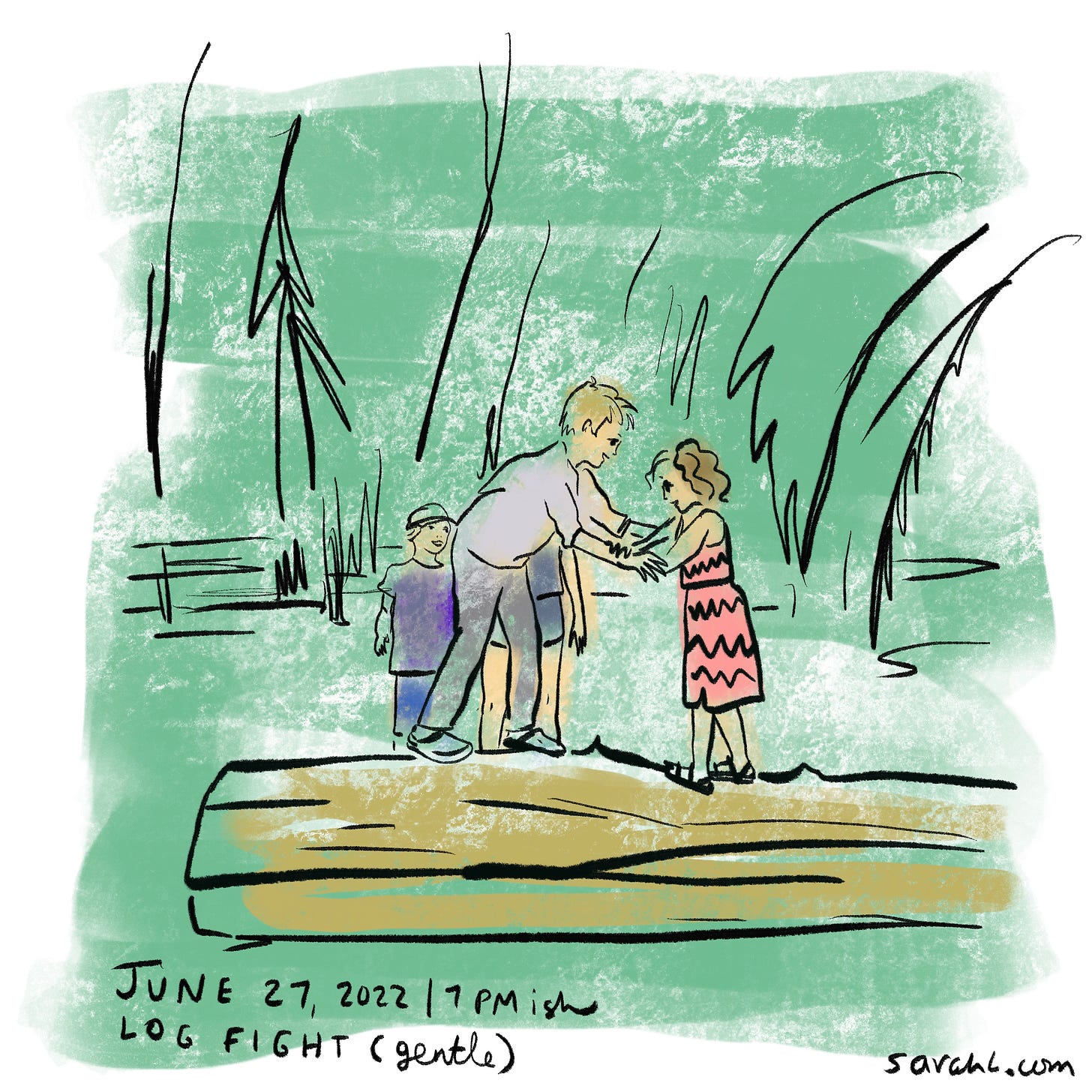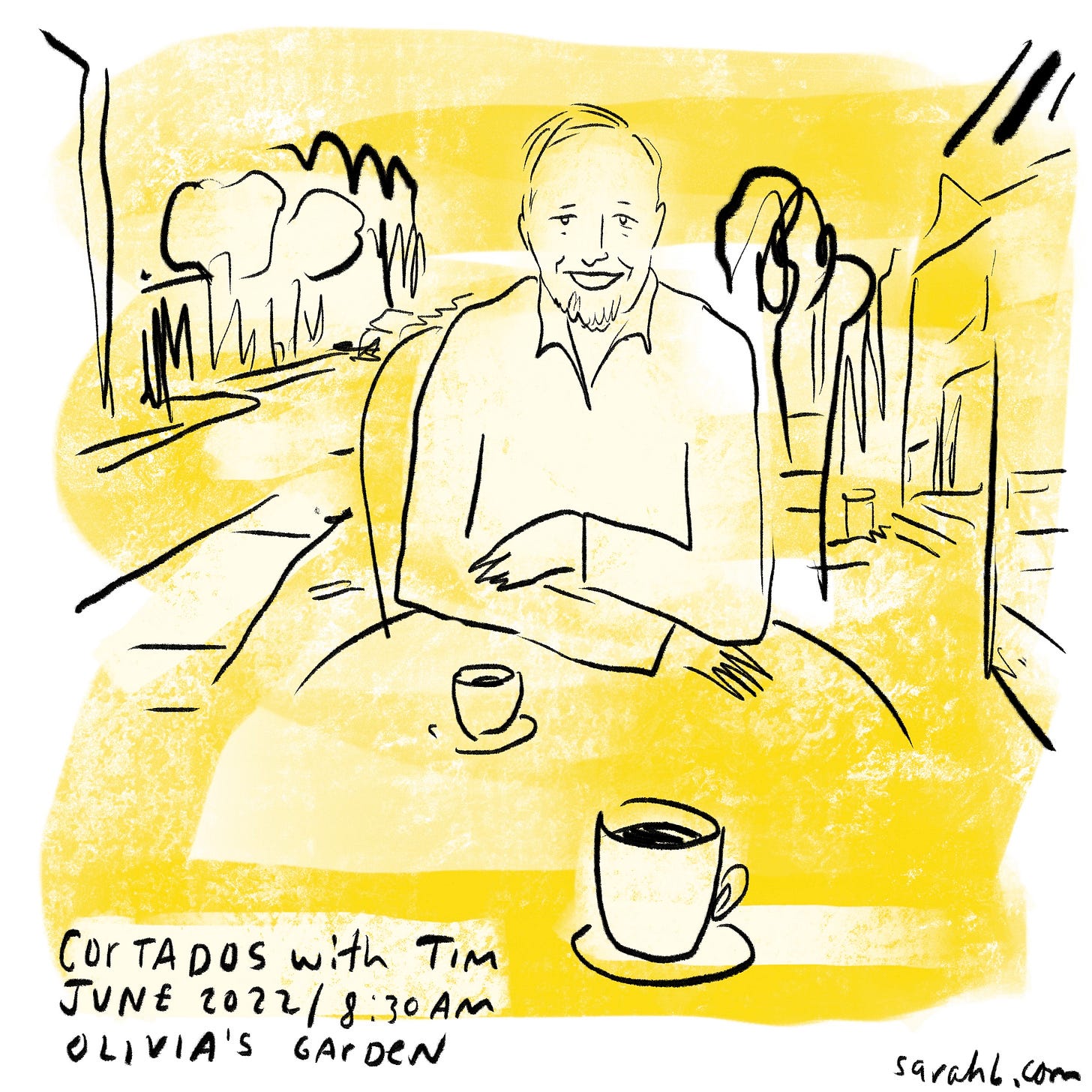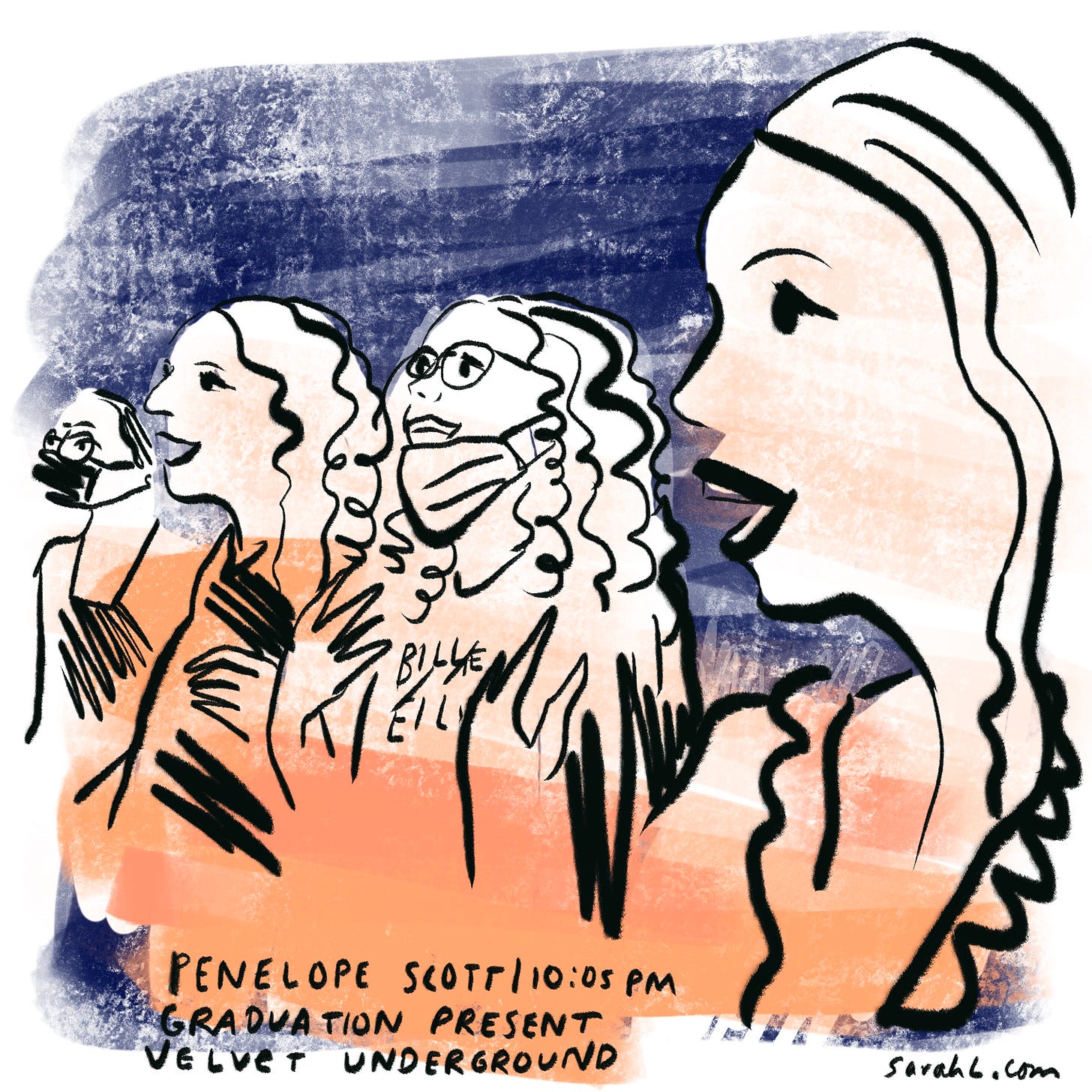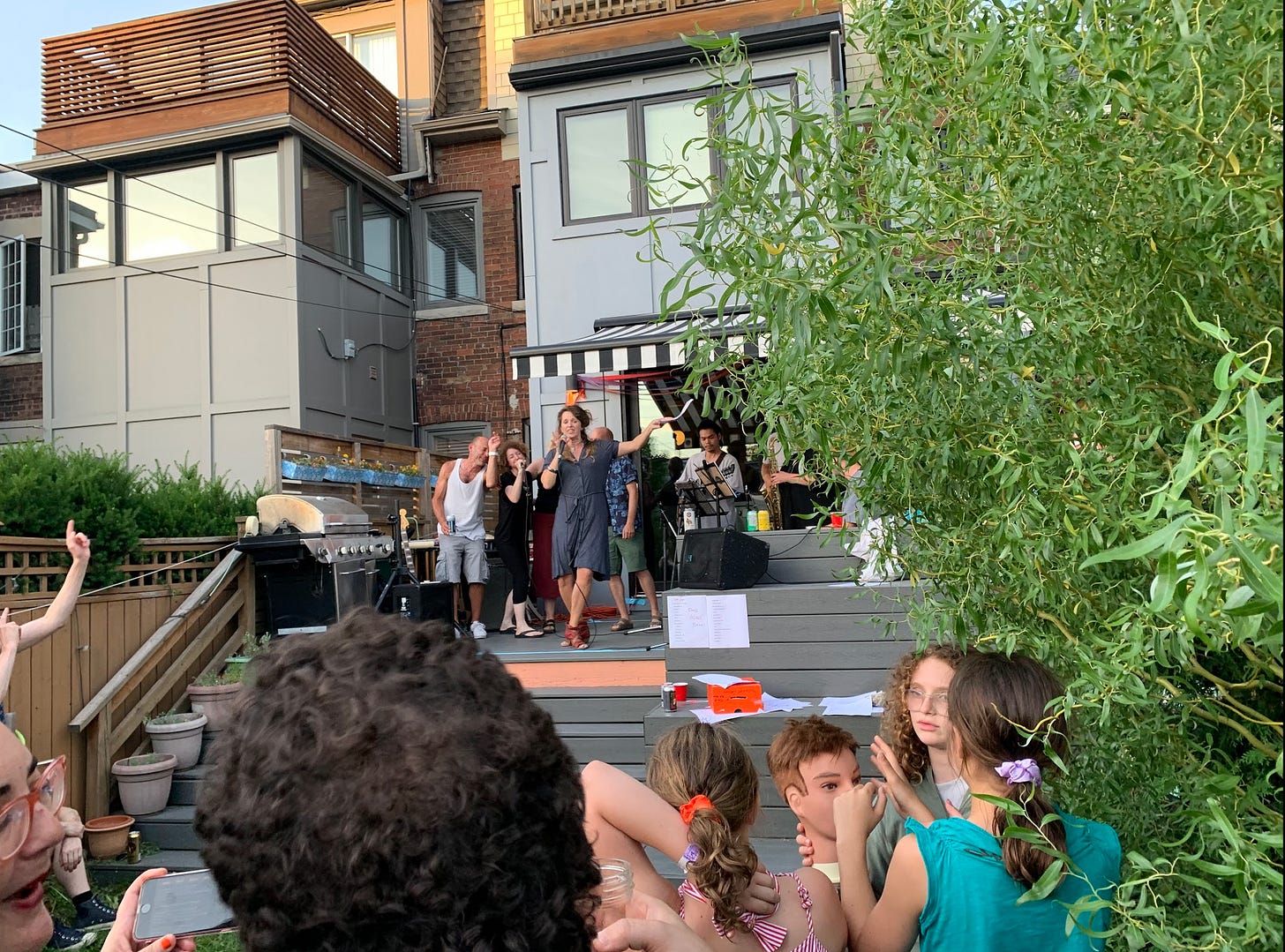Opinion Advocates for ideas and draws conclusions based on the author/producer’s interpretation of facts and data.
Putting the Commune in Community

I am a maximalist disguised in a minimalist jumpsuit. In truth, I want everything to be the richest, the strongest, the deepest. The I bought are blue, but not blue enough. Across every lemon square, I always feel things could be lemonier. ±ő’m not dissatisfied or sad about it, there’s just a space where more lemon could go, and I recognize it. I realized this was how I felt about community when my friend Rebecca noted that I was wistful last week.
As a contestant on a Will Shortz quiz show once remarked and I have never forgotten, I am not wistful so much as full of wist. Wist is the wabi-sabi sentiment that pervades when I think about community and relationships: My community is great, but even as ±ő’m in it, I imagine the people who have left, the long-moved-away friends who that I must have given away nine dozen copies of when my kids were little. (This is bestseller status in Canada.) I like the fancy new coffee shop and floral boutique on our corner, but, , I also loved the Portuguese grocery store that preceded it, and its proprietors, a couple whose combined height was less than mine.
The community wist stems from a feeling that it is hard and ongoing work to keep collective memory alive. COVID-19 meant two years of no street parties, which means our street has lost some of its institutional memory—who remembers how to set up the line of barbecues? (Not me!) But community strength is about passing on knowledge, traditions, and charcoal know-how. So the wist is about both a nostalgia for experiences and people past, as well as the mild weight of the effort it takes to carry that past forward. The wist is about a desire to make our community as rich as it can be.

I used to feel like the baby bird on our street, looking up to the older fams. Like tiny Francesca, going on 90, who, mid-pandemic, grabbed my daughter and kissed her cheeks, proclaiming her “a real so cute girl.” Or the Hughes, who birthed our street party and have kept its mad ska energy alive. But now ±ő’m legacy, and people look to me to organize, to share what I know about the practicalities of our street. Or about how the city’s best Indian place on our corner was once a drug paradise called The Coffee Tip.
I think of all this in the context of neighborhood green savant . Tim graciously let me interview him for a documentary 15 years ago. The documentary never saw the light of day, but Tim sat on the way-too-large-for-the-room leather couch that my father-in-law had given us and submitted to my unending questions about retrofits.
Tim is . And I think it’s this longevity and community understanding that informs being a good advocate. This isn’t to say newbies can’t be the best community members (my neighbor Laurna!), just that if you’ve bashed your head against the wall for two dozen years trying to figure out how to make something work, you may have a thing or three to share. I asked Tim to tell me about his work retrofitting and electrifying Toronto.

Who are you and what’s your background? (That sounds really harsh!)
I’ve done many things over the years, but the most relevant connection here was spending 14 years on the board of the . It remains one of the most active associations in the city, often serving as a laboratory of city-building ideas and activities. During that time, I was involved with many tree-promotion efforts and co-chaired the and Tower Power Toronto.
One of the joys of participating in community projects is meeting so many interesting people and learning how many care about improving the world around them. Two years ago, HVRA’s board asked me to lead a climate change initiative, and before long, our net zero committee had grown to 15 people. I am very motivated when working with others who are also willing to put in the time to make good things happen.
What are some things you’ve learned along the way when it comes to greening and retrofitting in communities, from solar to everything you’re doing now?
Our downtown neighborhoods include many who care about the world and are willing to help if asked. As well, there are many seniors with both expertise and time on their hands, and who have deep roots in their part of their neighborhood. The more you publicize an important community project, more people will volunteer to help. The challenge is finding the roles that best fit their personalities in order to take advantage of their strengths.
The biggest lesson is the confidence that neighborhood bulk buys provide those interested in new technology to go ahead and install it. Fourteen years ago, we interviewed more than a dozen vendors of solar panels and an equal number of solar water heater vendors. By selecting those with reliable products and good customer service, it relieved people of the burden of having to get their own quotes from several vendors and motivates them to take advantage of the time-limited discounts that have been negotiated. Our net zero committee is using the same approach in our current promotion of the significant discounts we’ve negotiated on six induction stove ranges and four induction cooktops. This fall, we’ll be announcing discounts on heat pump water heaters and (we hope) air source heat pumps.
Because so many neighbors know each other, the word spreads quickly once the first household buys solar panels or goes completely off-gas for cooking, water heating, and space heating. People are motivated when they learn that neighbors in houses the same size as theirs have much smaller energy bills and enjoy greater comfort in hot and cold seasons.
Do you notice that social norms help make it easier for people to make these big switches?
What motivates people varies a lot. The climate crisis has driven many to seek ways to reduce the personal footprints. Others recognize that things like induction stoves and heat pumps represent better technology than what most use today. Having access to government grants and loans or the discounts we’re negotiating really motivates others. Fortunately, because many of us live in leaky and poorly insulated houses that are uncomfortable both during the winter and in summer heat waves, we are motivated to consider improvements.
What’s the hardest thing to convince people of? What are the pain points?
The old saying “if it ain’t broke, why fix it?” is a mindset that is hard to overcome. Yet if people wait until an older air conditioner or gas furnace breaks down, they most likely won’t have the time they would need to replace both with a heat pump, which is a much better alternative. So helping people think ahead is a priority for us.
Have you found there’s friction with contractors, vendors, installers?
Yes. For example, we searched far and wide for Toronto-area contractors trained in net zero renovations and only found three. After discussing with each of them the opportunity to add insulation to the exterior of 20-plus houses in the Harbord Village, only one followed through and supplied us with a quote. The other two were just too busy with other work. As well, when we approached five large bike shops to see if they could offer discounts on three types of e-bikes, they told us that poor supply chains meant that they had limited supply and no shortage of customers. That said, both constraints will likely fade in the next few years, and when they do, we will try again.
Tim, thank you so much!
If you are considering an induction stove, (you don’t need to live in Toronto!). Tim’s crew will be helping set up a heat pump water heater and air-source heat pump bulk buy in the fall as well. You can also talk to my friend about pumps. Or me. ±ő’m at nine converts. Be my tenth? Most recent dad friend at the school fun fair: “Hey, I want to talk to you about heat pumps.” Me: “Now? Is now good?”

This Planet: The Knowledge Keepers
Who do you trust to give you the DL in your neighborhood? How do you share your climate efforts and know-how? Let a wist-laden lady know.
Last Planet:
Thank you for your incredible submissions. I loved them all and excerpt three below. ±ő’m going to start with my mom. Because she’s my mom. Even though she gently tries to guilt me back to Florida in the below Facebook post (not happening, but I love you, mom).
Mom
Loved this week’s MVP. I still live in the community where Sarah grew up. I never thought I would live in suburbia. Nonetheless, I raised my kids here. The community has changed for the better. If you played tennis you were part of that community. Now most of the young families here take an interest not only in tennis, but in the environment. They organize events that better the ecology. One neighbor organized garden events encouraging neighbors to plant more appropriately.
There are a number of families whose parents live here and their children have bought homes here and are raising grandkids here. Now, ±ő’m a senior citizen here with my kids living out of the country. There are a number of us in a similar situation and we have become closer because our children are far away. We look out for each other.
Oonagh
Omg. I was right back at Montrose, feeling the excited vibes of the upcoming street party! And thank you for the shout out—I miss you guys so much!
We don’t have anything like the street party here. Apparently we used to but Covid killed the annual street potluck and no one has taken leadership to bring it back. It’s really such a gift when people do take on that kind of organizing burden.
Here are some of the community things that we’ve been involved in so far:
1. For better or worse, the strongest community structures here are around emergency preparedness. Each household is a member of a “pod,” which is a group of households that has its own systems of checking on neighbors and evacuating (forest fires are the biggest concern). In our case, we are supposed to put a white towel under a rock at the foot of the driveway once everyone is out of the house, check on the neighbours to our right, and then get to the beach across the stores and canoe or kayak over to the next island with our “bug-out bag.” This information was a bit disconcerting as far as a “welcome to the neighbourhood” greeting.
2. ±ő’m also a member of “100 Women Who Care,” where once a quarter we gather to hear pitches from local charities. We vote and the winning charity gets a donation of $100 from every woman in the room for a quick $10K. It’s a great way to feel involved in all the awesome initiatives on the island and meet all the cool old hippie activist ladies on the island.
3. Dylan volunteers as a soccer coach. I cannot emphasize how much this has built our sense of community here. He has inside jokes with half the kids on Salt Spring and we regularly get invites to brunch at funky permaculture farms because Dylan is friendly with all the parents. I went to check in at the emergency department at our local hospital (no big deal thing) and the admitting nurse was like “oh, you are Dylan’s wife!”
David
Thanks so much for your lovely blog. Your entry on community comes at an interesting time for me. Just yesterday my city’s (Flagstaff, AZ) sustainability commission, which I chair, approved my proposal to form a working group (cityspeak for “subcommittee”) to work on neighborhood resilience.
I can’t say I’m a Teddy, but I do have a passion for facilitating relationships between people. I teach and practice nonviolent communication (I especially love mediation) and I’m involved with [a] number of organizations in town.
My hope, through the working group, is to get support as I experiment with organizing my own neighborhood, which my wife and I just moved into, and invite others in Flagstaff interested in organizing their own to come together for support, learning, and fellowship.
Fire is a huge issue here and, to me, it seems a logical one to organize around. I’d love to stay in touch and network with other folks who respond to your blog entry with the goal of talking about how to make community building work.
(Of course. If you’d like to talk to David, message me and I will connect you!)
On Community Fundraising
Years ago, my agency did some work for the . It was working to democratize fundraising, piloting a program where everyday families could set up small funds with as little as a few thousand dollars. I loved this project, because it opened my eyes to how you needn’t be a moneybags to orchestrate purposeful giving. Everyone should be able to strategically support the organizations they love. ±ő’m so grateful to everyone who came out to our —the singers; the fans; , Indira (who inspired the idea!); and the excellent for his illuminating speech (eff! exclusionary! zoning!). We raised $5,000 and counting… and all I had to do was throw a small party and sing “Heart of Glass” at the top of my lungs. (You crushed this impromptu “Under Pressure,” Taliesin et al!)

Stuff
It was a crap week week for climate and for freedom, no way around it. I know things are dark when my dad starts lighting up our fam WhatsApp with descent into totalitarianism talk. I like this, from Bill McKibben, as usual: “”: “Fury—nonviolently exercised, but with the force of a firehose—can change the political dynamic that has been sending us in a slow drift towards some variety of rightwing theocratic fascism. But we may not get more chances. This right now is the opening.”
Tiny Positives
! (Great work, “What On Earth” crew!)
! (Or, yes, we should grow broccoli under solar panels.)
Look at (h/t Nat Bullard).
People Dancing
The Mayor of Montrose takes after his mom. We will close your dance floor down.
Me: Where’d you learn this move, Teddy?
Teddy:Â My body just knew how to do it.
Bonus People Dancing
This may go down as one of the world’s most regressive weeks in history. Last Friday, I thought my phone was going to explode from the heated missives of a million ladyfriends texting in outrage and despair at the suffering (and death) overturning Roe will cause. But we will get through this. And Olivia and Lily will help. (Warning: This is one giant, cathartic eff bomb.)
Music eases the stress. I was lucky enough to , preaching unity and freedom: “We don’t need bombs, we’ve got fire kites.” Yes!

Thank you so much for reading and sharing. Always tell me how to make this newsletter better. And have a wonderful weekend, wherever you are.
Sarah
P.S. This is my newsletter for the week of July 11, 2022, published in partnership with ľ«¶«Ó°Ňµ Media. You can sign up to get Minimum Viable Planet newsletter emailed directly to you at .

|
Sarah Lazarovic
is an award-winning artist, creative director, freelance animator and filmmaker, and journalist, covering news and cultural events in comic form. She is the author of A Bunch of Pretty Things I Did Not Buy.
|






